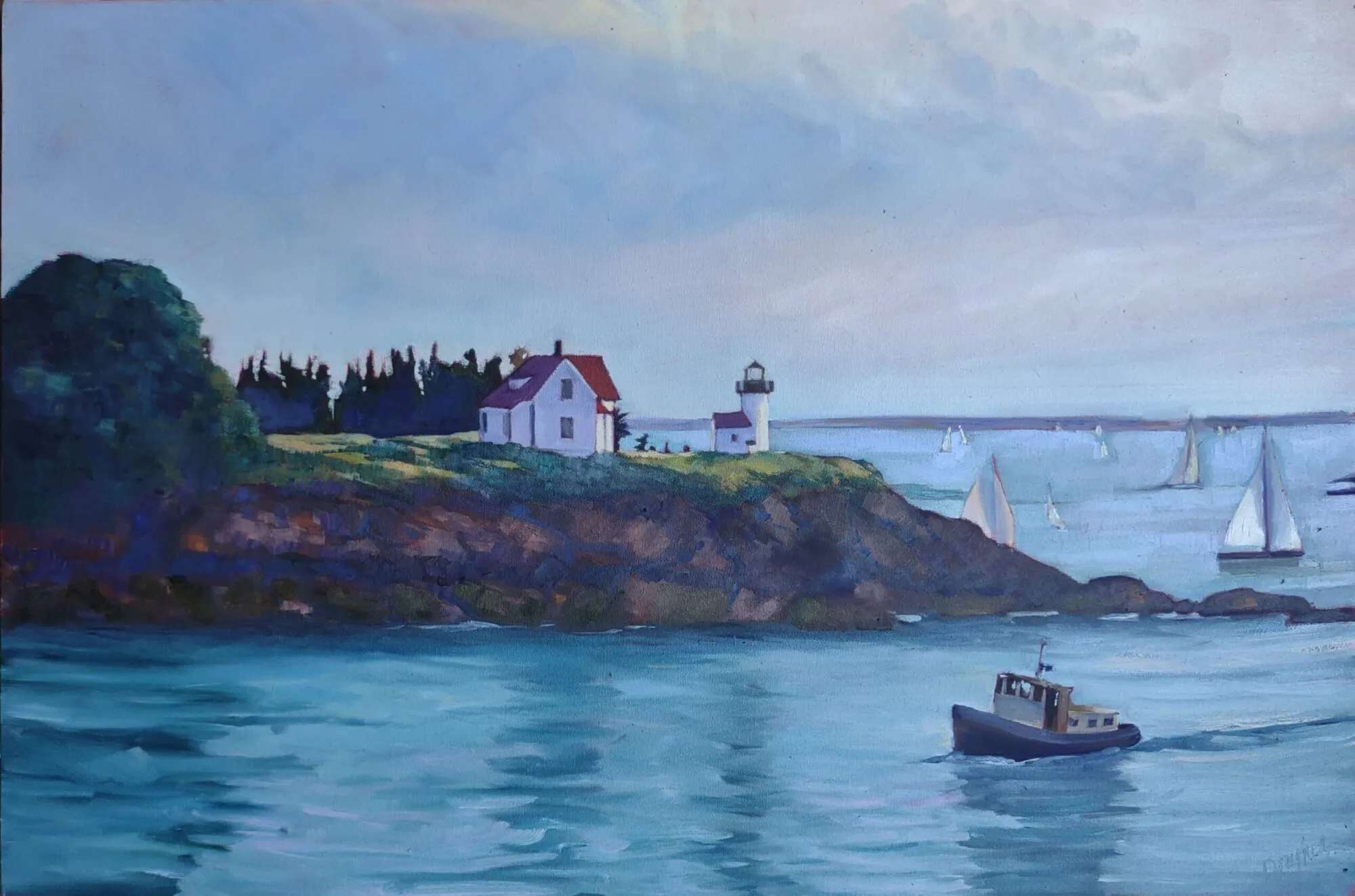
“Whiteface makes its own weather,” by Carol L. Douglas. High contrast clouds and a flat brush imply rain.
Clouds are a terrific, rampaging part of the landscape, and often the best part of a composition. I love painting them. They seem so easy that I never figured there was much secret gnosis to painting them, any more than there is some magic trick to painting water. However, last week a reader wrote asking for tips about painting clouds, and she got me thinking about how I manage them.
Clouds have perspective, but it is upside-down from earth-bound objects. That’s because the vanishing point is the horizon, putting the farthest clouds at the bottom of the sky. While we mostly look at the tops of earthbound objects, we mostly look at the bottoms of clouds. That makes the shadow color predominant.

Altocumulus clouds over the Hudson River, by Carol L. Douglas
As with earthbound objects, there is also atmospheric perspective: clouds are generally lighter and duller at the horizon. This, however, is subject to circumstances. At dawn and dusk the horizon may be the most colorful part of the sky. A good storm turns everything on its head.
Figuring out the color of clouds is easy: there’s a color for the highlights, and a color for the shadows, and these are more or less opposite each other in color temperature. On a peaceful day, the values of shadow and highlight are almost the same. When there’s a real range in value in the clouds, you have an ominous sky.

Surf study by Carol L. Douglas
Note and use the patterns of clouds, rather than randomly placing one or two clouds in the canvas. The pattern should be part of your design. White, puffy cumulus clouds often appear in repetitive patterns across the sky. Cumulonimbus clouds are towering portents of rain or worse. These are the clouds that often have dark shadows and odd coloring, for they are livid.
A mackerel sky, high in the atmosphere, is a sky knitting itself together in advance of a change in the weather. “Mares’ tails and mackerel scales make lofty ships to carry low sails,” is an acknowledgement of this phenomenon. High-atmosphere clouds have no volume. They are merely regular patterns of white against a blue sky.

Higher cirrus clouds (above) and cumulus clouds (horizon) at Olana, by Carol L. Douglas
I used to live in the Great Lakes region. If I looked north, I would almost always see a band of cumulus clouds low on the horizon, racing down the center of Lake Ontario. Such local weather patterns exist all over the country. They are part of the ‘sense of place’ where you live. You can’t paint them until you observe them.
How do I translate those observations onto my canvas? In practice, I mix a puddle of the shadow color of the cloud and a puddle of the light color. I race around, first with the shadow color and then with the highlight color, to create a pattern. When that is established, I used particular clouds as reference to finish the details. Since clouds constantly morph, there is no danger of repetitiveness. This is the only time I ever use straight white from the tube, for it sometimes acts as my mid-tone in clouds.

“Clouds over Hudson, NY,” by Carol L. Douglas
What brush? As with everything else, it depends on what you are trying to say with your mark-making. A flat will convey energy. A filbert or round will allow you to be more lyrical. It’s up to you.
Dr. Albert C. Barnes, founder of the Barnes Collection, was very particular in how his paintings were hung. He believed that he could improve individual paintings’ compositions by juxtaposing paintings and furnishings in the greater space of a room. That’s pretty cheeky considering the Impressionist masterpieces he collected, but in his defense, nobody knew they were masterpieces yet.
You can use clouds in your painting to redirect the viewer in the same way. Although—like water—clouds’ patterns are usually wavelike and horizontal, there is no reason to be hidebound about that. Within the reality of their structure, you can find ways to lift and lead the viewers’ eyes.
The greatest painter of clouds alive today is the Glasgow-trained landscape artist,
James Morrison. I strongly encourage you to study his paintings, to see how his clouds have volume, character and energy. They are never an afterthought in the landscape; they are a potent force within it.





















